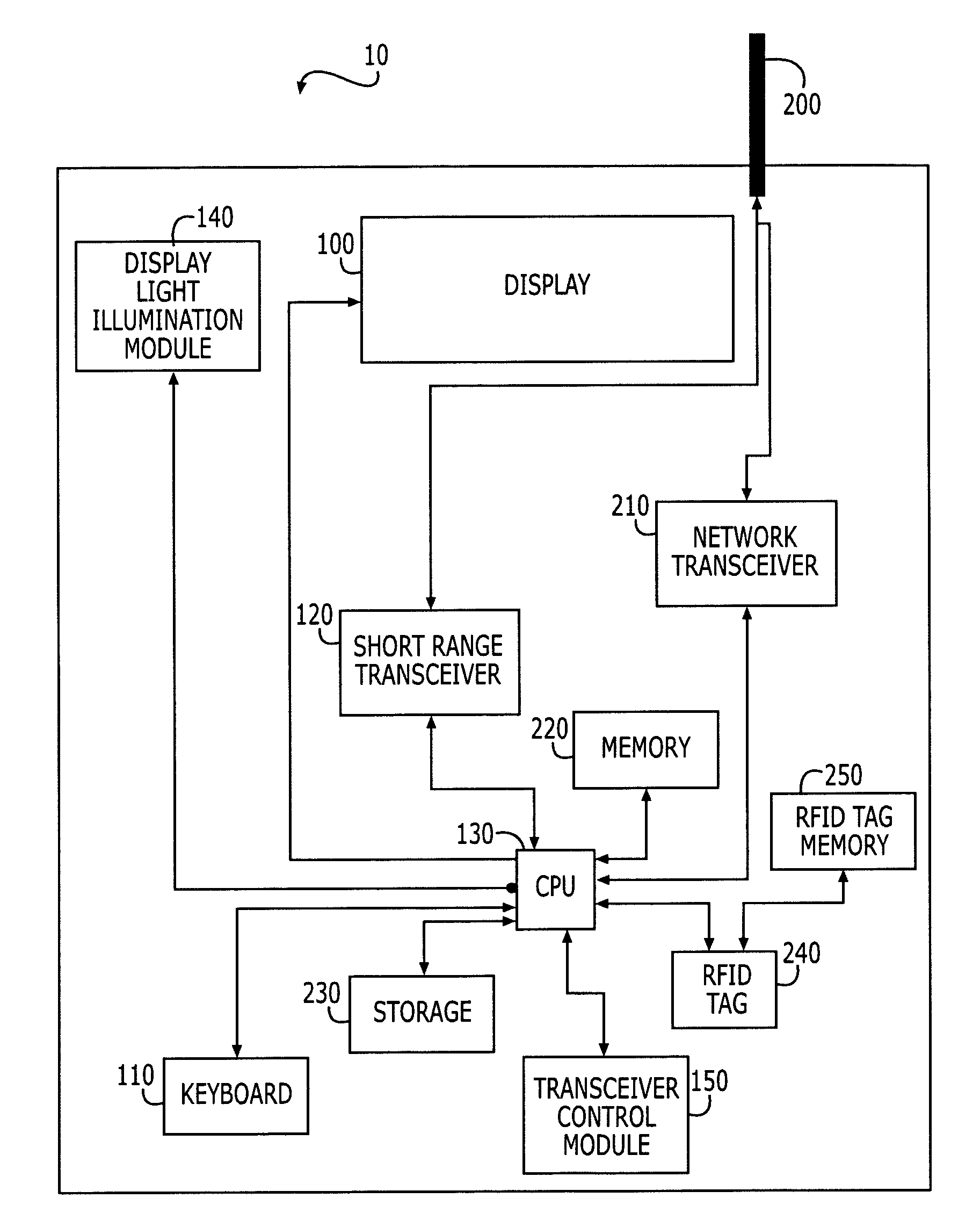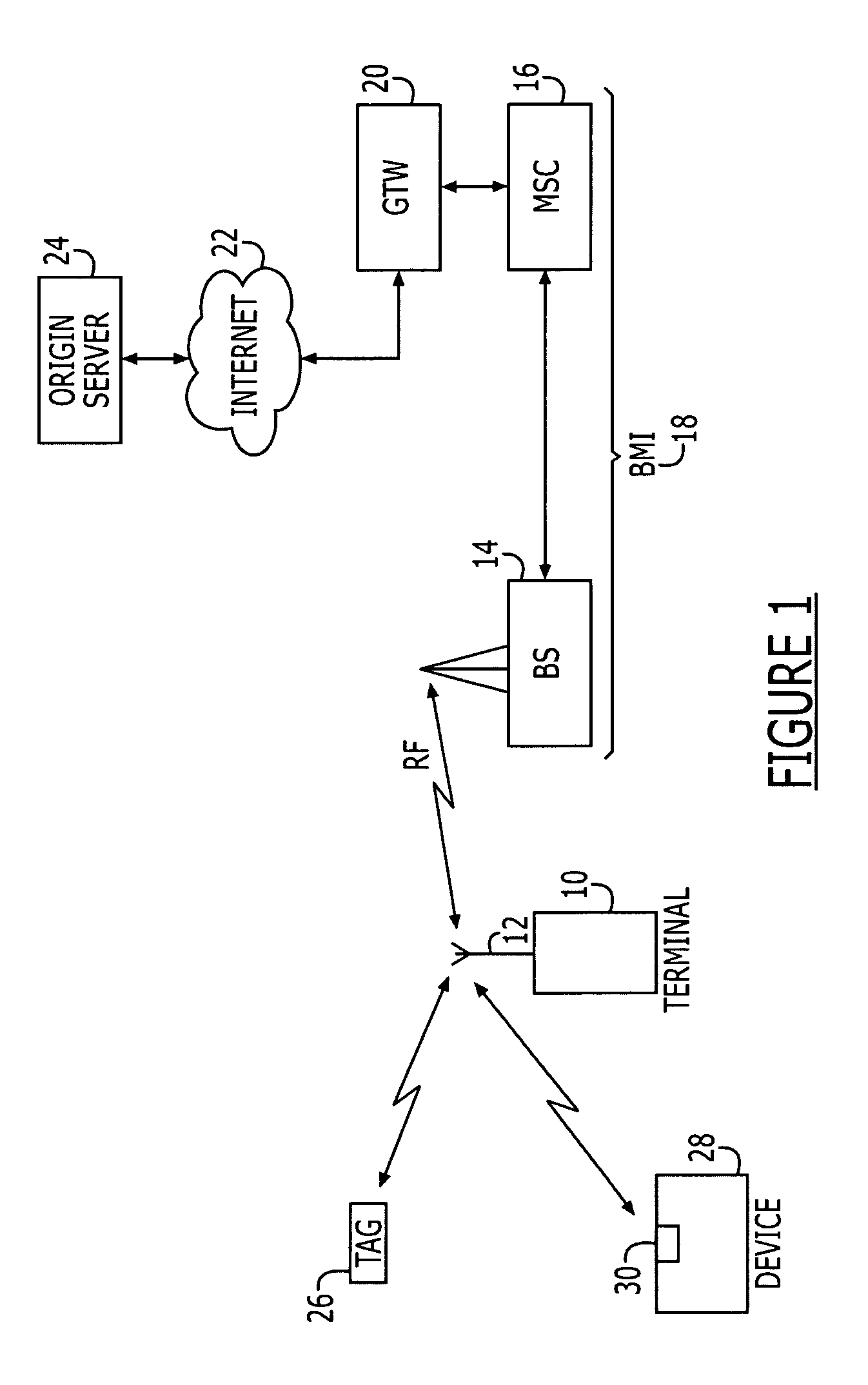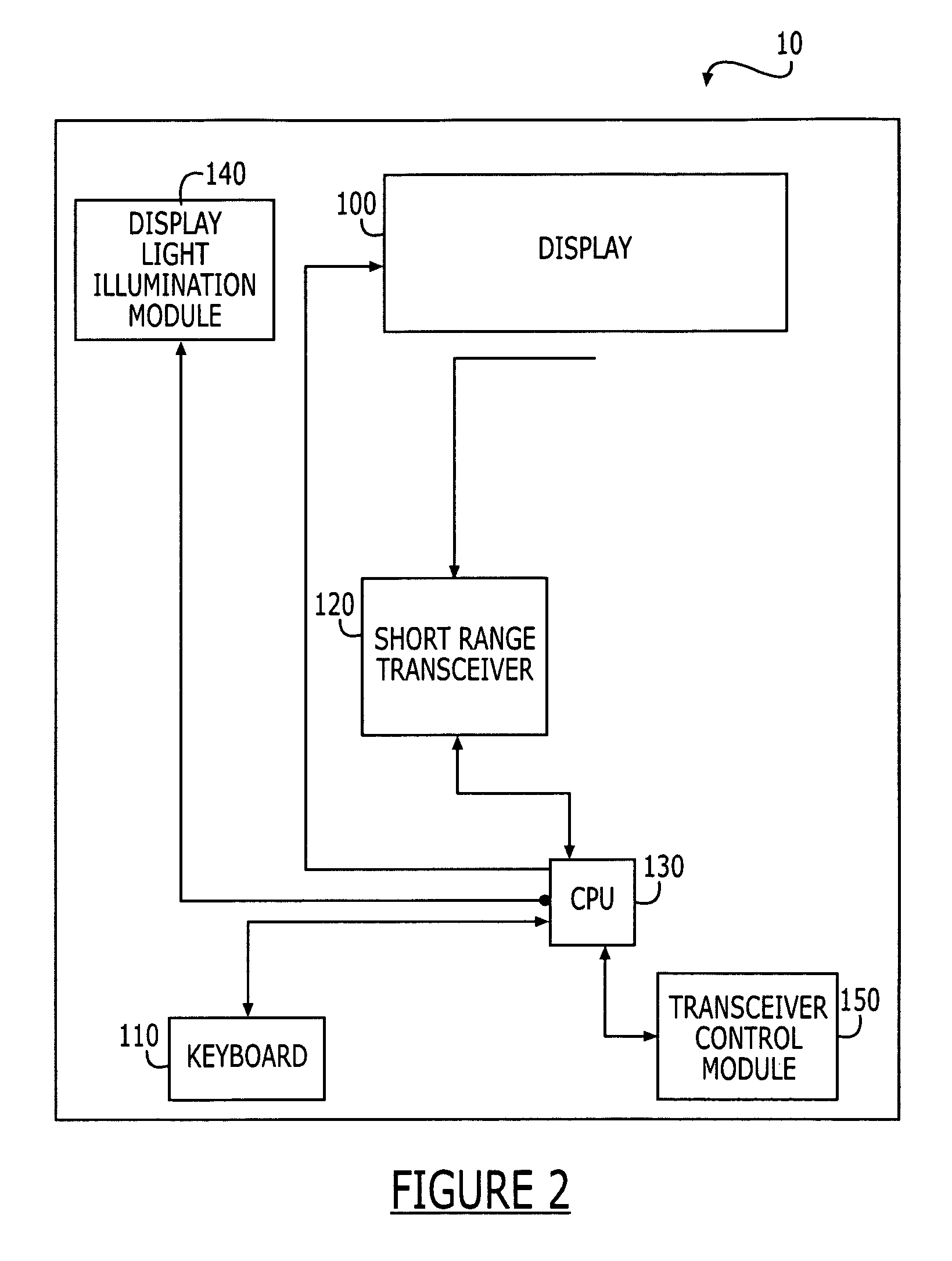Intuitive energy management of a short-range communication transceiver associated with a mobile terminal
a technology of intuitive energy management and mobile terminal, which is applied in the direction of power management, high-level techniques, instruments, etc., can solve the problems of energy consumption, continuous active operation of any type of short-range communication equipment, such as a nfc system, which consumes significant amounts of power, and achieves energy saving, less power, and inadvertent reading of tags or data communication
- Summary
- Abstract
- Description
- Claims
- Application Information
AI Technical Summary
Benefits of technology
Problems solved by technology
Method used
Image
Examples
Embodiment Construction
[0029]The present invention now will be described more fully hereinafter with reference to the accompanying drawings, in which preferred embodiments of the invention are shown. This invention may, however, be embodied in many different forms and should not be construed as limited to the embodiments set forth herein; rather, these embodiments are provided so that this disclosure will be thorough and complete, and will fully convey the scope of the invention to those skilled in the art. Like numbers refer to like elements throughout.
[0030]The present invention is defined by methods, terminals and computer programs that provide for greater conservation of power in mobile devices associated with short-range communication equipment, such as Near Field Communication (NFC) transceivers and the like. In particular, the techniques for power conservation of the present invention provide for the transceiver / reader to be automatically activated in conjunction with the illumination of a user-int...
PUM
 Login to View More
Login to View More Abstract
Description
Claims
Application Information
 Login to View More
Login to View More - R&D
- Intellectual Property
- Life Sciences
- Materials
- Tech Scout
- Unparalleled Data Quality
- Higher Quality Content
- 60% Fewer Hallucinations
Browse by: Latest US Patents, China's latest patents, Technical Efficacy Thesaurus, Application Domain, Technology Topic, Popular Technical Reports.
© 2025 PatSnap. All rights reserved.Legal|Privacy policy|Modern Slavery Act Transparency Statement|Sitemap|About US| Contact US: help@patsnap.com



